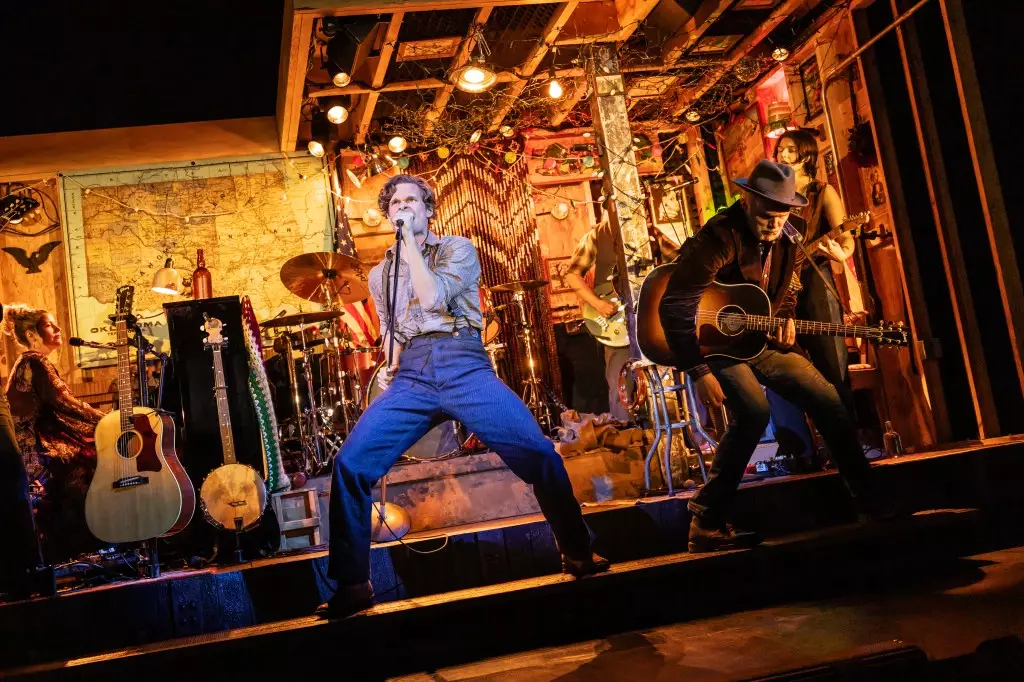Broadway’s annual Tony Awards season isn’t merely a time for celebrating theatrical excellence; it’s a battleground where performances are both critiqued and commercialized. As we inch toward the awards ceremony set for June 8, the financial implications of nominations and critical acknowledgment are coming into sharper focus. Recent box office figures reveal a landscape expanding and contracting in surprising ways, highlighting just how much an accolade—or the absence of one—can influence potential success.
The Tumultuous Impact of Nominations
The thrill of Tony nominations draws in audiences and, inevitably, curiosity about box office performance—that fickle beast that responds sensitively to critics’ reviews and public interest. In the week concluding May 18, approximately 14 shows scheduled for nominations suffered from dwindling sales, while 10 productions observed a modest surge. While one might argue that the awards do not dictate intrinsic artistic value, the correlation between critical acknowledgment and ticket sales is undeniably profound. Economic viability often hinges on a show’s status, and it’s exclusively refreshing to witness certain productions flourish even without a nomination.
Take “Redwood,” for instance. This production—featuring Broadway darling Idina Menzel—was completely overlooked in the nomination process, and yet it paradoxically experienced a box office uptick of $191,581 in its final week before closing. This anomaly offers critical insight into the unpredictable nature of theater economics. If public sentiment is strong enough, an artist’s connection with the audience can outweigh formal recognition in the form of a nomination.
The Curious Case of Sell-Outs
“Good Night, And Good Luck” and “Sunset Blvd.” represent two fascinating case studies of the awards cycle’s influence on ticket sales. The former reported an increase of $143,803 thanks to its five Tony nominations, while the latter saw an impressive rise of $146,711. Both productions not only increased their gross but did so in ways that reflect the show’s growing cultural relevance. With Hollywood stars like George Clooney at the helm, it raises the question: are audiences flocking to the theaters because of the high-profile nominations or the inherent star power tied to the show itself?
Conversely, productions like “Smash” and “Gypsy,” despite their nominations, demonstrated that critical acclaim does not automatically guarantee financial success. Their declines serve as a sobering reminder that the box office is unpredictable, often influenced by factors beyond mere nominations.
The Drama of Shut-Out Productions
The narratives surrounding shows that were completely shut out from nominations take on an almost tragic tone against the glittering backdrops of New York’s theater district. For instance, “Othello” and “Stephen Sondheim’s Old Friends” managed to maintain staggering grosses and occupancy rates, with “Othello” reported at over $3 million. This resilience proves that stellar performances and dedicated audiences can transcend the political machinations of industry awards. The impact of the Tony Award nominations cannot be overlooked but neither can the strength of the artistic endeavor itself.
This circumstance begs the question of whether some productions are inherently insulated from such setbacks. The legacies of timeless works can synergize with the performers’ compelling artistry, creating an alchemical blend that holds enduring appeal regardless of the season’s awards. The nimble dynamics of theater are highlighted here, offering a portrait of resilience not commonly portrayed in the conventional award season narrative.
A Broader Economic Overview
The statistics emerging from Broadway indicate a wider recovery phase post-pandemic, with an increase of nearly 20% in gross revenue compared to last year. This data signifies that the audiences are returning and perhaps growing more astute in their selection of performances—those that engage not just through story but through a profound artistic connection. The uptick in overall ticket prices and attendance also underscores an evolving market, where supply and demand dictate financial success.
It raises the age-old debate regarding what defines success in theater—financial gain or artistic achievement? Culture isn’t merely defined by accolades, but also by enduring legacies that resonate deeply within the hearts of the people. As we approach the Tony Awards, this intricate interplay between commerce and artistry stands testament to the depth of Broadway’s charm, revealing an industry as complex as the narratives it creates. The continued evolution of Broadway promises to challenge perceptions, unearthing wealth of insight along the way, a narrative yet to be fully explored.

